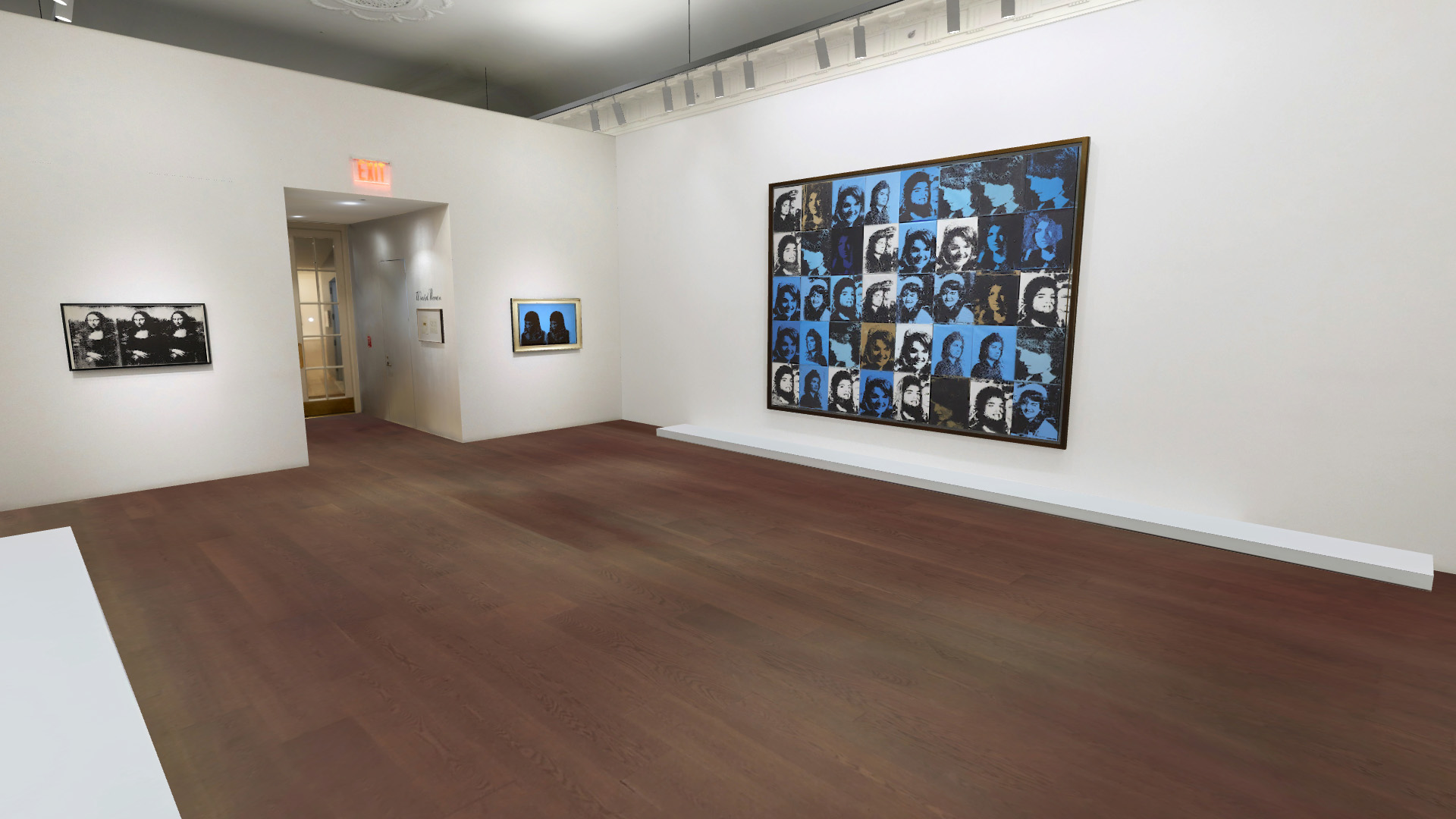

Loading...


New York—Beginning April 25, 2019, Lévy Gorvy will present Warhol Women, an exhibition devoted exclusively to Andy Warhol’s portraits of women from the early 1960s through the 1980s. On view through June 15 at Lévy Gorvy’s landmark building on Madison Avenue, the selection of paintings, covering the full scope of Warhol’s career, invites the viewer to ponder the artist’s complex and often contradictory relationship to myths and ideals of femininity, beauty, and power. Whether intimate or monumental in scale, each canvas embodies the ambiguities that animate Warhol’s oeuvre. Made using his signature silkscreen process, they seem at first glance to submit to impersonal iteration—the machine-like detachment of the Factory production line. Yet, upon sustained viewing, they convey something indelible about their sitters: an aura of intimacy that by turns intrigues and unsettles. Forever undecidable, these portraits offer up both the glittering surface and the raw humanity of Warhol’s art, which pulses with the evidence of his halftone silkscreen process and, in works of his later years, fluid strokes of synthetic paint. Through paintings riotous and defiant, vulnerable and demure, Warhol Women sheds fresh light on both the artist’s oeuvre and our present moment, wherein questions of female empowerment and the construction of identity through images are as urgent as ever.
The exhibition opens with a sweeping wall of portraits of Jacqueline Kennedy Onassis from the early 1960s. Capturing Jackie immediately before and after her husband’s assassination, this grouping weaves a cinematic narrative of supreme glamour and sudden tragedy, drawing the viewer into the public spectacle of her private grief. These monochromatic images of Jackie in mourning are shown in contrast to Red Jackie (1964), in which Warhol immortalizes the First Lady in a classic portrait of sumptuous reds. Nearby, another one of Warhol’s objects of devotion from the 1960s, Marilyn Monroe, appears atop luscious stretches of mint, licorice, and azure. Frontal and closely cropped, Licorice Marilyn (1962) and Mint Marilyn (Turquoise Marilyn) (1962), elicit adoration and desire, resembling religious icons for an image-saturated age. Also on view, Triple Mona Lisa (1963) harkens back to the history of portraiture, reproducing again one of the modern era’s most reproduced paintings through successive yet subtly different impressions of ink. Magnetic and inscrutable, Mona Lisa testifies to the captivating inaccessibility of female beauty, which often defies the viewer’s attempt to possess it.
The second floor turns to Warhol’s earliest portraits. In a key 1963 canvas, prominent art collector and socialite Ethel Scull strikes a series of poses, from quizzical to buoyant, that convey an infectious vitality. The strips of images from a photo booth—the ultimate automation tool for portraiture in its day—speak to the allure of self-made celebrity to which both Scull and Warhol aspired. Other paintings feature figures who discovered power in the margins, as in the case of the striking mid1970s example from Warhol’s Ladies and Gentlemen series, which depicted black and Hispanic drag queens scouted in the streets and bars of New York. Towering over the viewer, Wilhelmina Ross finds an exuberant freedom in the fluidity of gender identity. Here, as in many other works on view, Warhol’s high-key colors at once accent and conceal, promising closeness while holding the sitter forever at a distance.
In the 1970s and ‘80s, Warhol increasingly staked his reputation upon celebrity portraiture, generating scores of paintings of women from popular movies, music, fashion, politics, and high society in a standardized 40-inch-square format. The final floor of Warhol Women spotlights these works, which the artist based upon images taken with a Polaroid Big Shot camera, in an edge-to- edge, wraparound display. In feverish hues, Warhol drew out the qualities that entertainers like Dolly Parton and Liza Minnelli made famous in their splashy acts on stage and on screen. But he was equally fascinated by pioneering women who wielded power in the international arena (paintings of Israeli prime minister Golda Meir and the writer and arts patron Gertrude Stein are among the examples on view), as well as those outside of the limelight. A 1974 portrait of his then-deceased mother, Julia Warhola, offers a fleeting glimpse into Warhol’s personal life, reflecting on the tenuous distinction between private self and public persona that his paintings of women similarly explore.
Warhol Women includes loans from important institutions, including the Brant Foundation, New York and Connecticut, and the Froehlich Collection, Stuttgart, Germany. Alongside Warhol’s paintings, a selection of his Screen Tests—short, silent, black-and-white films that translate portraiture from canvas to celluloid—will illuminate yet another aspect of how Warhol looked at, considered, and depicted women. Projected in a room coated in aluminum foil, the installation will pay homage to the enveloping silver environment of the original Factory where these films were shot. Normally reserved for movie actors, the Hollywood screen test was co-opted by Warhol as a vehicle for making every subject a star, revealing their true identity by letting his camera roll without filtering or directing his subject.
Also included in the exhibition is a selection of portraits of Andy Warhol by photographer Christopher Makos. In June of 1981, Makos took 365 photos of his good friend wearing heavy feminine makeup and an assortment of glamorous wigs—including the iconic bleached, pixie cut variation Warhol always wore in public (and often in private), calling the project Altered Image. Documenting Warhol in a manner that rendered the artist paradoxically both costumed and exposed, these photos constitute portraiture in perhaps its truest form, and thus allow greater insight into Warhol’s own portraiture.
About Lévy Gorvy
Lévy Gorvy cultivates a program devoted to innovation and connoisseurship in the fields of modern, postwar, and contemporary art. Founded by Dominique Lévy and Brett Gorvy, Lévy Gorvy maintains gallery spaces at 909 Madison Avenue in New York, in Mayfair, London, and in Central, Hong Kong. The gallery fosters continued dedication to the living artists and artists’ estates that it represents and offers a robust program of exhibitions and multidisciplinary events. The gallery also produces ongoing art historical research and original scholarship, publishing exhibition catalogues, monographs, and other key publications. The Zürich office, Lévy Gorvy with Rumbler, offers bespoke private advisory services to collectors and institutions around the globe.







